To enable our screw extrusion presses and extruder presses to work unmanned over a longer period of time, we offer concepts for automatic filling. We use the same six-axis robot which handles the extruded rods. This saves costs and makes perfect use of the robot’s capacity.
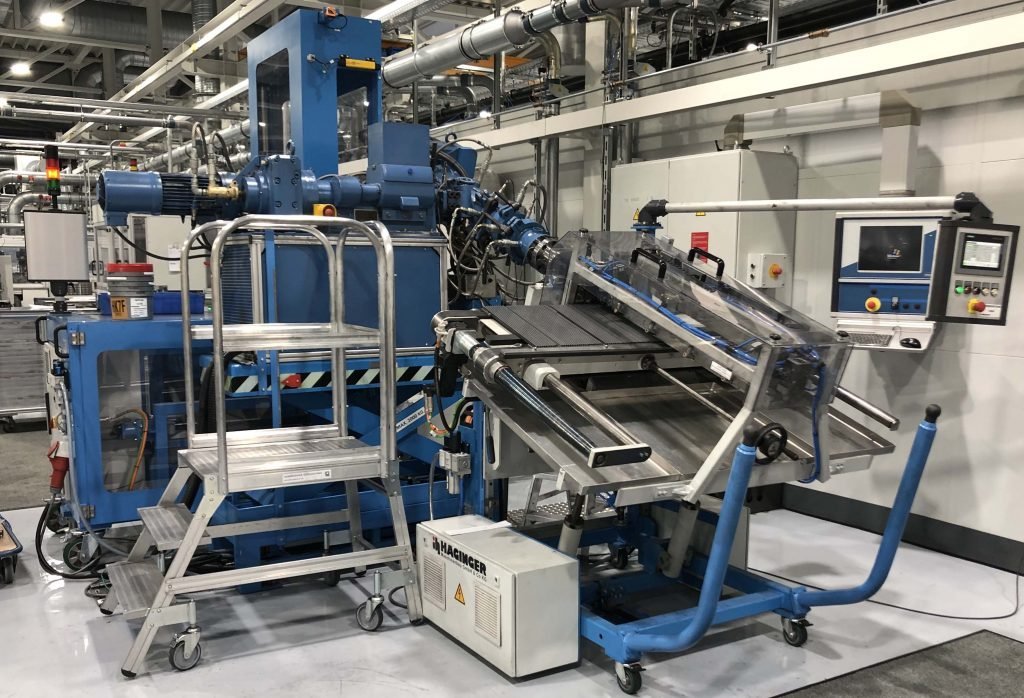
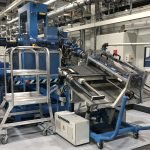
The robot is mounted overhead on a gate to obtain the maximum reach. This also allows optimal accessibility of the press, so that it can also be filled manually by the operator.
The type of container in which the material is filled is irrelevant to us. We develop a concept for you so you can continue using your standard transport containers. These can be, for example, closed or open buckets, barrels, or even pre-pressed lifting buckets.
The robot grips the bucket, opens it, and fills the material into the material-container of the press. The empty bucket is placed or stacked in a defined way. The piston extrusion press moves fully automatically into the filling position as soon as it is empty. After filling, the press automatically starts pre-compression and afterwards it starts to press carbide rods fully automatically.
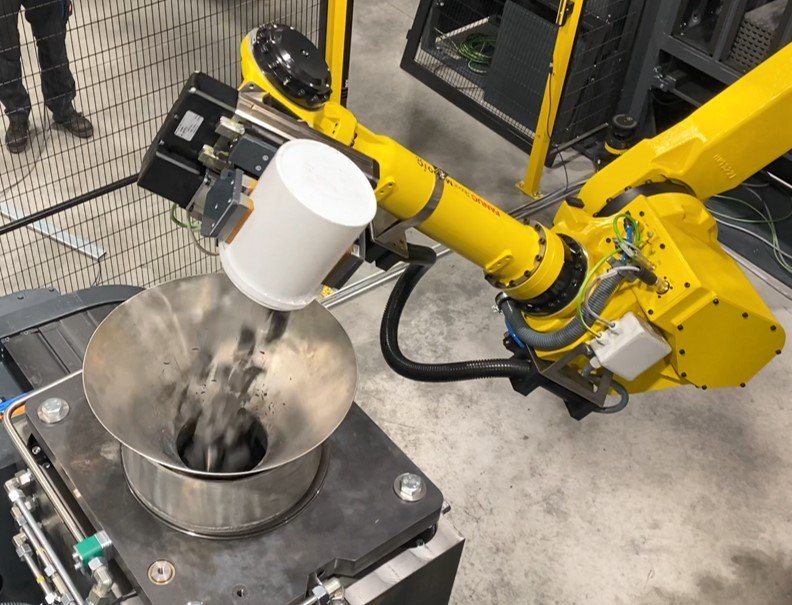
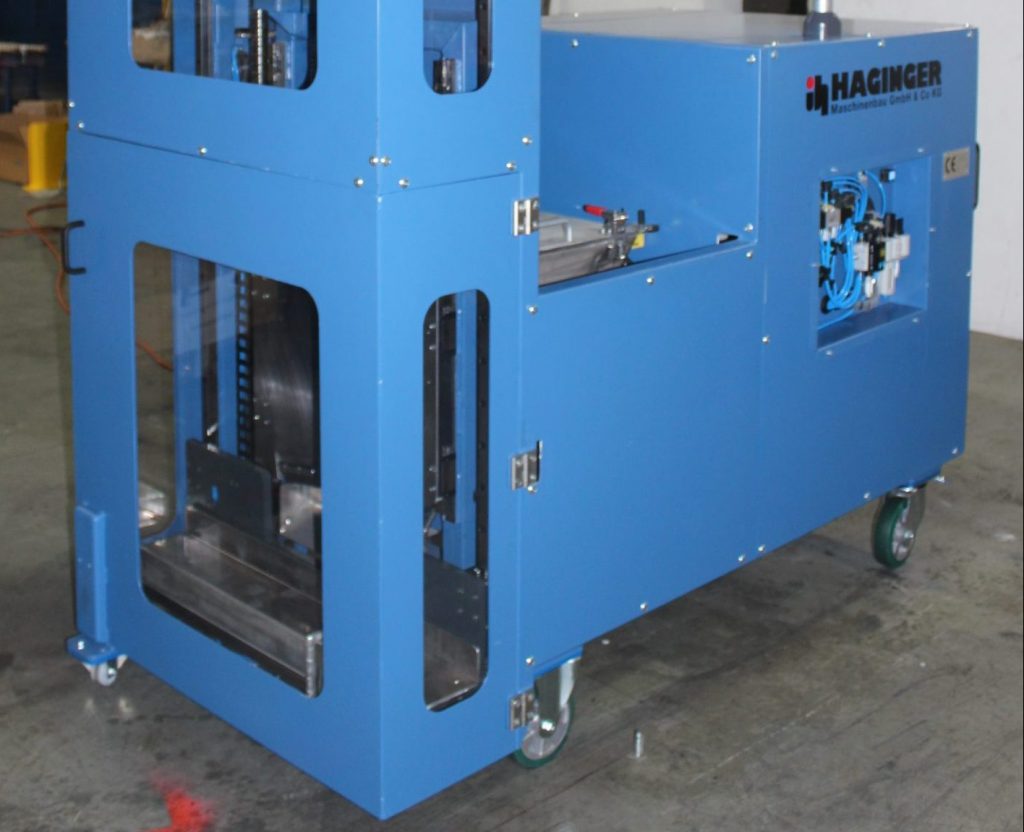
We do not only supply filling systems for our piston extrusion presses. We also supply filling systems for screw extrusion presses or piston extrusion presses by other manufacturers. In this process it is particularly important that the press is continuously filled and does not run empty. In most cases, we use our dosing device for this purpose.
The operator fills the material into a sealed material container. The size of the container can be chosen individually, and it can hold up to 200 kg of feedstock. Making the container as airtight as possible prevents the feedstock from hardening and toxic gases from spreading into the environment.
The way the material is filled is irrelevant to us. Powder, granulate, loose chunks or pre-compressed chunks can be used. The material is pushed forward by an electrically driven piston where a large knife cuts off a defined quantity. This falls into a trough in which the weight of the separated material is weighed. The trough then moves upwards and pushes the material into the screw press.
All surfaces that come into contact with the carbide are made of stainless steel. Furthermore, the surfaces are smooth throughout which makes cleaning easy when changing batches.
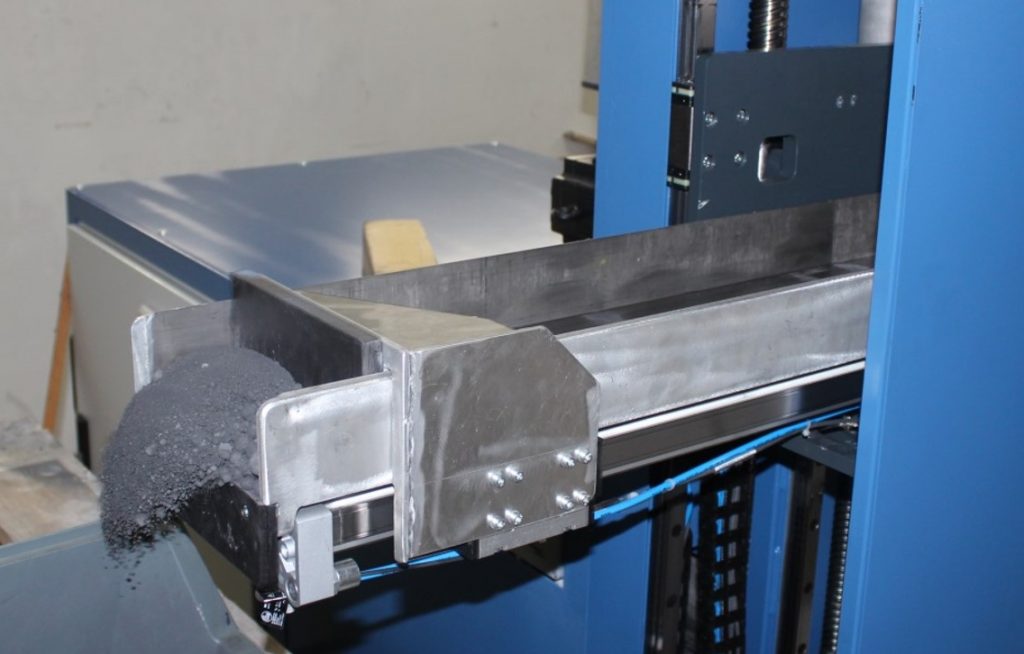

We are looking forward to supporting you with our expertise and many years of experience in mechanical and industrial engineering.
Apply today to join a young and dynamic company with a focus on modern technology and customer satisfaction.
Data protection | Imprint | T&C | Webdesign by – Werbeagentur Die Gipfelstürmer